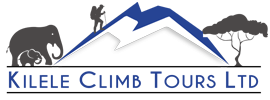Lake Manyara National Park
A Home of Tree Climbing Lions
Lake Manyara National Park
The lush green vegetation consists of tall trees of the ground water forest, the tree-climbing lions, the soda lake inhabited by thousands of pink-hued flamingos, large water birds, and the troops of baboons and blue monkeys, and the rift valley escarpment make your safari to this area unforgettable.
The park derives its name from a plant called Euphorbia tirucalli, known as Emanyara in the Maasai language, and covers an area of 648.7 km2.
Info About Lake Manyara National Park
- Area: 325 km² /125 sq. Mi of which 200 km² /77 sq. Mi is Lake.
- Established: 1960
- Location: Manyara & Arusha Regions, Tanzania
- Distance & Drive time: 126 kilometers from Arusha City
Climate
The Park experiences a bi-modal rainfall season with short rains starting from November to December and long rains from February to May and the dry season is from late June to October.
It is located at an altitude between 850 and 2000 meters with annual average rainfall ranging from 650 to 760m
Getting there
The Park can be accessed by road or air
Best Time to Visit.
The best time to see large animals in Lake Manyara is during the dry season, from July to October. If you are a bird lover you can better visit the park from November till June. During this season you can spot thousands of flamingos as well as pelicans, African Fish Eagle, hornbill, Hamerkop, Black heron, little bee-eater, and much more.
Park Attractions
The Park has remarkable attractions most notably the tree-climbing lions, Marang’ forest, hot spring, ground water forest, diversity of bird species, and the rift valley. Plan your trip by visiting Lake Manyara National Park where you will get an exceptional experience that quenches your travel thirst.
Most Wild Animals
Elephant, buffalo, hippo, lion, leopard, occasional cheetah, and giraffe. Lions here have opted to rest up during the heat of midday in trees, giving Manyara lions somehow different behavior.
Birds
The park offers a high diversity of bird species over 390 birds species both migrants and residents including 50 birds of prey, raucous forest hornbills, pink-hued flamingos, and flotillas of pelicans.
Hot springs
Its water is heated by volcanic activity to a temperature of 76.5 0C. The water is important to source of food for lesser flamingos and the mineral content of the water is associated with curative values.
Ground Water forest
These dense evergreen harbors resident bushbucks, primates, and a multitude of bird species.
The varied habitats
The varied diversity of habitats including the rift valley escarpment, open grassland, woodland and the lake makes the area an ideal place to visit.
Marang’ Forest
It lies above the escarpment and harbors elephants, buffaloes, duikers, baboons, blue monkeys, leopards and many forest dwellings bird’s species.
Activities
- Game Drive
- Night Game drive
- Walking safari
- Canoeing
- Bird Watching
- Canopy Tree Walk
- Filming and Photographing








